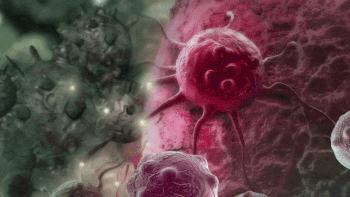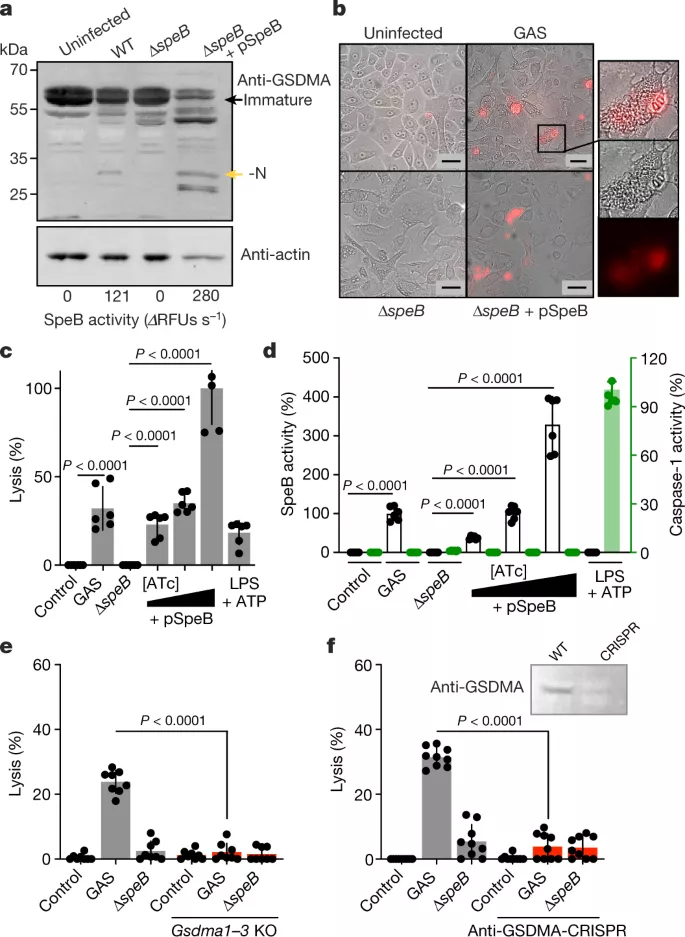*A new study shows that the protein gasdermin a can induce cell death in the skin, the largest organ in the human body, * which is a way of programmed cell death. Every second, a million cells die in your body. That means 2.6 pounds of cells die in a day. But there is no need to worry. Cell death is an important process in the body because it allows unwanted cells to be removed. Many diseases may be caused or worsened by cells failing to die or dying when they should not.

Cells may die from injury, however, most cells kill themselves. There are many different ways of cell death. Some are the result of systematic and "programmed" procedures. Some cell death programs leave no sign of dead cells, while others use dead cell substances to attract the immune system.
Emory University researchers have discovered a mechanism of skin cell death that could lead to new treatments for "carnivorous" infections, alopecia, urticaria, and possibly even melanoma, the deadliest type of skin cancer.
These findings were published in Nature 》In the journal, it is part of the ongoing research led by Dr. Christopher Larock, associate professor of Microbiology and immunology at Emory University, and Dr. Doris Larock, assistant scientist at Emory University, and funded by the National Institute of allergy and infectious diseases of the United States.

According to Larock, the study shows that a protein named gasdermin a discovered by his team can cause skin (the largest organ in the human body) to scorch or cell death. According to him, the protein acts as an early warning system against bacterial attacks by attracting more immune cells to the region.
"Essentially, what we see is that skin cells would rather destroy themselves than be occupied by dangerous bacteria," Larock said
The body relies on cell death to stay healthy - although this process can also be accidentally switched on, causing damage. However, until now, people do not know much about how this process occurs. This new discovery advances the scientific understanding of cell death because it clarifies what triggers it in the skin.
Larock pointed out that bacteria such as group A streptococcus (gas) are considered to be the main cause of skin infections, such as necrotizing fasciitis or "carnivorous" diseases. Hundreds of thousands of people die and weaken every year, because clinicians often rely on debridement and amputation, because antibiotics alone are not enough.
"This study shows how skin cells detect gas and how it evades antibiotics by hiding in cells. We hope to target these processes so that we can both save lives and reduce the need for surgery," Larock said.
Larock said that the new immune protein gasdermin a discovered during their research may play an important role not only in preventing gas, but also in preventing other pathogens. He added: "we are studying how to use our findings to target cell death and help us better treat infections, as well as diseases such as alopecia, dermatitis, psoriasis and keloids, which are diseases involving skin cell death."

In this study, the cells of volunteers were used to culture human skin in vitro for infection. A mouse model was also used to study how the skin interacts with immune cells.
A key question Larock and his team are investigating is how the body distinguishes between a threatening microorganism and a benign microorganism. Scientists now know a lot about how this process works in the later stages of the disease, but less about the onset of the disease.
"Pathogens such as Staphylococcus aureus and gas complicate our understanding because they are sometimes part of the microbiota, sometimes cause mild diseases, and sometimes cause serious fatal diseases," Larock said. "It is important for our bodies to distinguish between dangerous and harmless pathogens, so that we can appropriately adjust the scale of our antimicrobial response."
Larock has been studying pathogens for many years. He said that NIAID funding enabled his laboratory to study microorganisms and factors that promote inflammation. "Some pathogens are simply fatal because they weaken our inflammatory response, such as Yersinia, which caused millions of deaths due to pestis in the middle ages. But gas is different because it deliberately over activates inflammation to sow chaos."
Researchers are also supported by grants from within the Woodruff Center for Health Sciences and are working with collaborators across the university to extend their observations to other diseases.